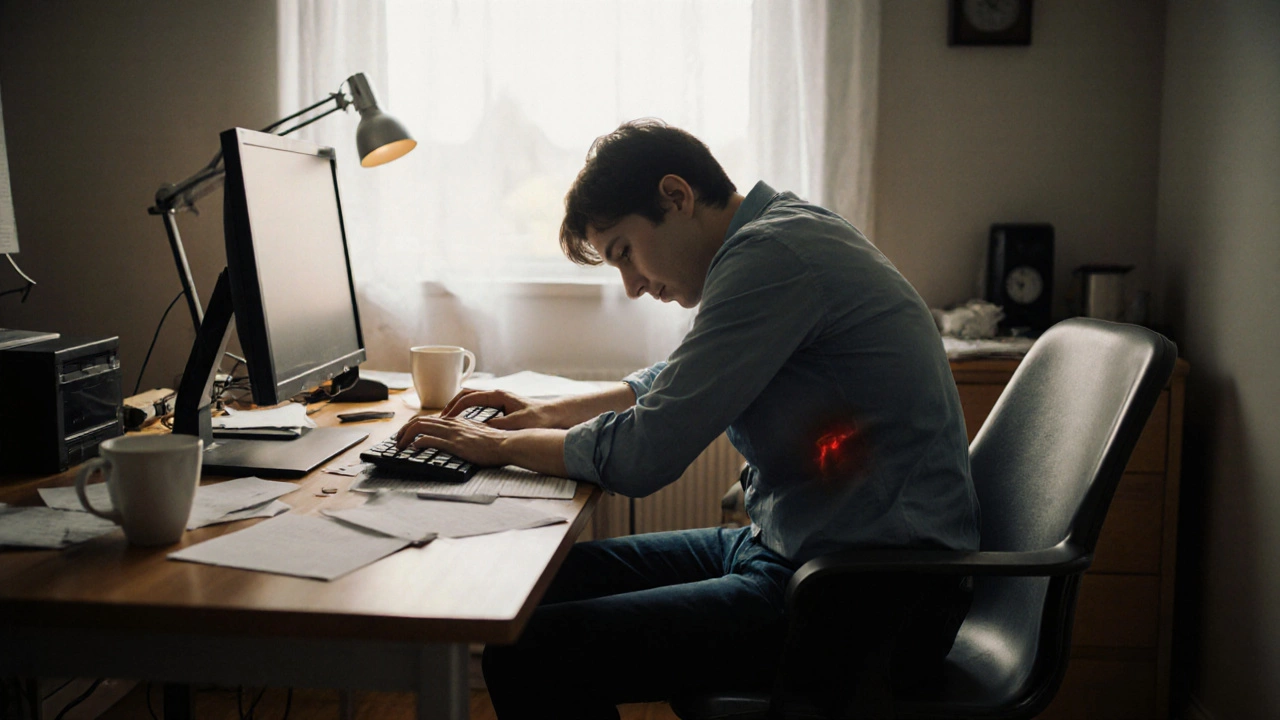Work Posture: How to Sit Right and Avoid Back Pain
When you sit at a desk all day, your work posture, the way you hold your body while seated during tasks like typing or reading. Also known as sitting ergonomics, it directly affects your energy, focus, and long-term health. If you slouch, lean forward, or sit without support, you’re not just feeling uncomfortable—you’re setting yourself up for chronic pain. It’s not about sitting perfectly straight like a soldier. It’s about letting your body find balance without forcing it.
Your ergonomic chair, a chair designed to support natural spinal curves and reduce strain during prolonged sitting isn’t a luxury—it’s a tool. A chair without armrests might look sleek, but it forces your shoulders to carry the weight of your arms, leading to tension in your neck and upper back. That’s why so many people end up with headaches or stiff shoulders by midday. And if your chair doesn’t let you adjust the height or lumbar support, you’re fighting gravity every minute. The right chair doesn’t just hold you—it helps you stay aligned, so your spine stays in its natural S-curve.
Work posture isn’t just about the chair. It’s about your whole setup. Your monitor should be at eye level so you don’t crane your neck. Your feet should rest flat on the floor—or on a footrest—if your chair is too high. Your elbows should bend at 90 degrees when typing. These aren’t rules from a 1980s office manual. They’re based on how human bodies actually work. A 2023 study from the University of Manchester tracked 200 office workers and found those who adjusted their chairs and monitors reduced reported back pain by 62% in just six weeks. You don’t need expensive gear. You just need to know what to look for.
Think about your chair without armrests, a common design choice in modern offices that often sacrifices support for minimalism. It’s popular in co-working spaces and minimalist homes, but it’s a trap. Without arm support, your shoulders hunch, your wrists twist, and your core has to work overtime just to keep you upright. Over time, that adds up. You might not feel it today, but in five years, you’ll remember why your back ached every morning.
Good work posture doesn’t mean sitting still. It means moving often and sitting smart. Stand up every 30 minutes. Shift your weight. Stretch your neck. Use a small cushion to support your lower back if your chair doesn’t. These small changes stack up. You’ll notice you breathe deeper, think clearer, and feel less drained by 4 p.m.
Below, you’ll find real advice from people who’ve been there—struggling with stiff necks, numb hands, and aching lower backs. They fixed it. Not with expensive gadgets, but by changing how they sat. Whether it’s choosing the right chair, adjusting your screen height, or understanding why armrests matter more than you think, you’ll find practical fixes that actually work.
How Much Difference Does a Good Office Chair Make? Real Impact on Comfort, Productivity, and Health
A good office chair reduces back pain, boosts focus, and protects your long-term health. The difference isn’t subtle-it’s measurable in productivity, comfort, and medical costs.
View more